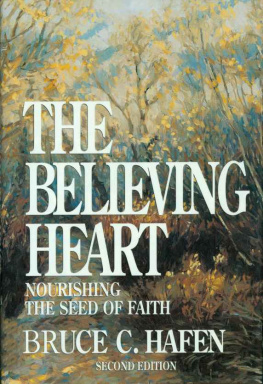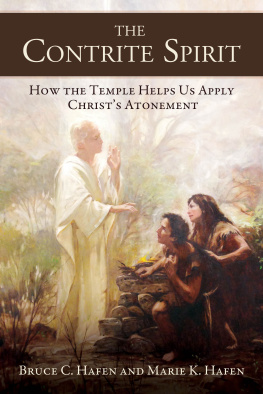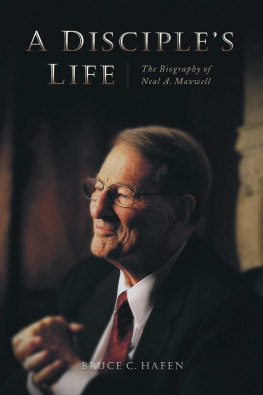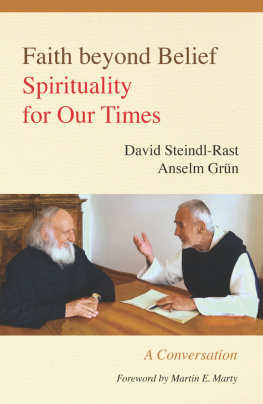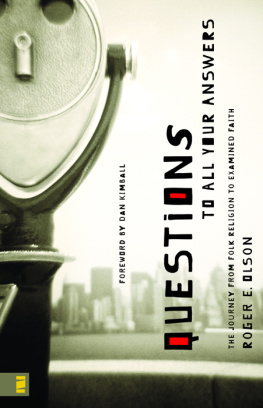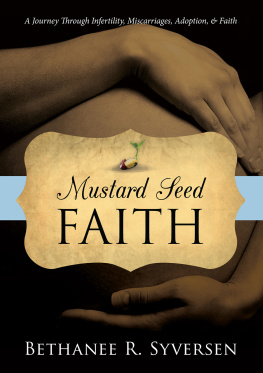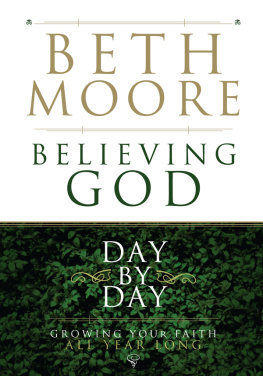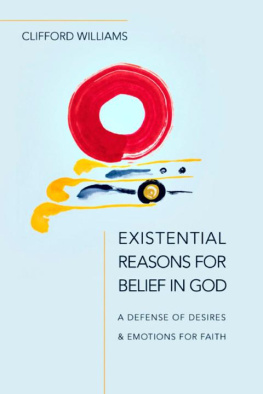The Believing Heart
Bruce C. Hafen
1990 Bruce C. Hafen.
All rights reserved. No part of this book may be reproduced in any form or by any means without permission in writing from the publisher, Deseret Book Company, P.O. Box 30178, Salt Lake City Utah 30178. This work is not an official publication of The Church of Jesus Christ of Latter-day Saints. The views expressed herein are the responsibility of the author and do not necessarily represent the position of the Church or of Deseret Book. Deseret Book is a registered trademark of Deseret Book Company.
THE BELIEVING HEART
Nourishing the Seed of Faith Second Edition
Bruce C. Hafen
Deseret Book Company Salt Lake City, Utah
To the prophet Alma, who taught us that a testimony is a living, growing thing; and that faith is a process, not an event.
About the Author
Bruce C. Hafen was appointed as Provost of Brigham Young University in June 1989. He first went to BYU in 1971 as Assistant to the President and as a member of the charter faculty of the BYU Law School. From 1976 to 1978 he served as Director of Research and Evaluation in the Correlation Department of the Church, and from 1978 to 1985 he was President of Ricks College. He was then appointed dean and professor of law at BYU's J. Reuben Clark Law School, which position he held until 1979.
Brother Hafen has published widely, including numerous scholarly articles on family, education, and constitutional law and in professional legal journals, among them the Harvard Law Review, Michigan Law Review, Duke Law Journal, and the American Bar Association Journal. Several of his religious articles and reprinted addresses have appeared in the Ensign and BYU Today. The first edition of The Believing Heart was published in 1986, and his second book, The Broken Heart, was released in 1989.
In the Church, Brother Hafen has served as a member of a bishopric and a stake presidency, and as a Regional Representative. He and his wife, Marie Kartchner Hafen, are the parents of seven children and live in Orem, Utah.
Preface to the Second Edition
Since 1971, I have been blessed to teach religion, law, and the liberal arts at Brigham Young University and at Ricks College. I have loved this teaching experience, because it has created uplifting associations with curious and believing young people, and because it has permitted me to explore my own questions about life in an atmosphere of faith.
During the early 1980s, I began collecting my teaching notes and my personal study notes in an effort to define the three religious issues that, by then, held the greatest meaning for mefaith, the Atonement of Jesus Christ, and relationships among people. I noticed, gradually, some strong developmental connections among these three topics: (1) faith prepares us to receive the Atonement; (2) the Atonement purifies, mellows, and strengthens us; and (3) the Atonement then helps us build our relationships with the Lord and with others, especially family members.
Mormon has eloquently described this developmental process: "And the first fruits of repentance is baptism; and baptism cometh by faith unto the fulfilling the commandments; and the fulfilling the commandments bringeth remission of sins; And the remission of sins bringeth meekness, and lowliness of heart; and because of meekness and lowliness of heart cometh the visitation of the Holy Ghost, which Comforter filleth with hope and perfect love, which love endureth by diligence unto prayer, until the end shall come, when all the saints shall dwell with God." (Moroni 8:25-26.)
In a conversation in about 1984, Mariemy wife and my closest spiritual and intellectual confidanteand I first entertained the thought of some day preparing a series of three books that would push us to clarify what we were learning about these three interconnected themes. The possible titles seemed very natural: The Believing Heart, The Broken Heart, and The Belonging Heart. We saw the third volume as a project we might work on as co-authors. That is a hope we still nurture.
With notes and assorted rough sketches scattered about on pieces of all three topics, but with too much else to do, we decided to wait for quieter years to work on our "trilogy of the heart." Then Cory Maxwell from Bookcraft nudged me to the point of preparing four essays on faith as the first edition of The Believing Heart in 1986.
In 1988, Stanley A. Peterson of the Church Educational System invited me to speak about the Atonement to the Church's seminary and institute teachers at their annual summer symposium at BYU. Because of what I knew I would learn from the remarkable "peer review" process the symposium provided, this struck me as a unique opportunity to pull together the partly incoherent fragments I had been collecting on that topic. Sheri Dew of Deseret Book Company later ran across a copy of this symposium talk, and she urged that it become the basis for The Broken Heart, which Deseret subsequently published in 1989.
In the meantime, Bookcraft's first printing of The Believing Heart expired, and Deseret Book acquired the copyright from Bookcraft with the thought of publishing a revised and enlarged second edition as a companion volume to The Broken Heart. This book is the result of that process. I have reworked the first four chapters somewhat and have added two new chapters, the seeds of which were scattered through those files from the past.
Chapter one, "The Believing Heart," is less fully developed than the rest of the book, because it only introduces themes that are more naturally developed in later chapters.
Quotations from Alma's memorable allegory on the seed of faith in Alma 32 introduce each chapter. When I began my missionary service as a young man, Alma 32 was my anchor, as my testimony was only beginning to take root. Because of inexperience, I felt very green; yet someone assured me that only green things grow. The idea that religious faith develops through a process of growthlike a living, growing treeincreasingly rang true with my experience.
In those days, I thought Alma was speaking about faith in God in the most basic and general sense. But now I see that the seed and the tree also convey a more specialized and, hence, a more potent message, a message I suppose we will begin to grasp only "after the trial of [our] faith." (See Ether 12:6.) Through the learning process of completing The Broken Heart, I began to see how powerfully the seed of faith is connected to the doctrine of the Atonement.
Alma taught his masterful lesson on faith to a group of impoverished Zoramites. He taught them the process by which the seed may, if properly nourished, grow within them into "a tree springing up unto everlasting life." The fruit of this tree is "most precious," "sweet above all that is sweet," "white above all that is white, yea, and pure above all that is pure; and ye shall feast upon this fruit even until ye are filled, that ye hunger not, neither shall ye thirst." (Alma 32:41-42.)
This tree is the same tree of life described in the story of Adam and Eve (see Genesis 1-3). The fruit of this tree is depicted in Lehi's dream as "the most desirable above all things" and "the most joyous to the soul." (1 Nephi 11:22-23.) In a general sense, the tree of life represents the "love of God" (1 Nephi 11:22), but in a more focused theological sense, God's love as symbolized by this tree is most fully expressed in the Atonement of Jesus Christ.
After Alma concluded his sermon on the seed and the tree, his listeners were receptive enough to ask "how they should plant the seed, or the word of which he had spoken, which he said must be planted in their hearts; or in what manner they should exercise their faith." (Alma 33:1.) Alma concluded his answer to these questions with a moving invitation for his audience to keep their eyes on the holy Atonement of the Son of God, a life-giving tree whose fruit would bless them not only with forgiveness of sin, but also with the strength to bear all of life's burdens and, finally, with the capacity to enter into the Lord's rest through the "joy" that is in Christ:

